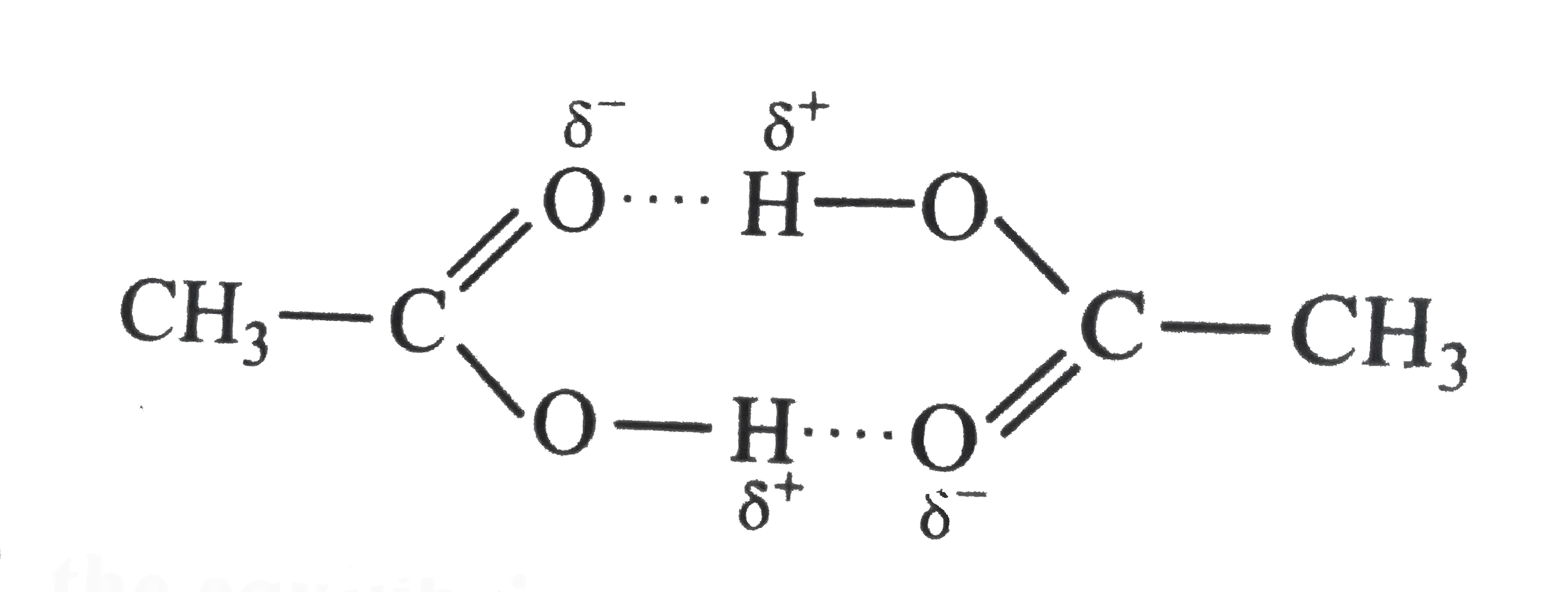Acetoc acid CH3COOH can form a dimer (CH3COOH)2 in the gas phase. The dimer is held togther by two H−bonds with a total strength of 60.0kJper mole of dimer

If at 25∘C, the equilibrium constant for the dimerisation is 1.3×103, calculate ΔSΘ for the reaction
2CH3COOH(g)⇔(CH3COOH)2(g)
Video Solution
Text Solution
ΔGΘ=−2.303RTlog10k
=−2.303×8.314×298log(1.3×103)
=−17767.688J=−17.767kJ
ΔGΘ=ΔHΘ−TΔSΘ
−17.767=−60.0−298×ΔSΘ
ΔSΘ=−60.0+17.767298=−0.141kJ
|
Topper's Solved these Questions
Similar Questions
Why is CH2=CH−COOH a stronger acid than CH3CH2COOH?
View SolutionAcetic acid (CH3COOH) is partially dimerised to (CH3COOH2) in the vapour phase. At a total pressure of 0.200 atm, acetic acid is 92.0% dimerized at 298 K. The value of equilibrium constant of dimerization under these conditions is
View Solution
Knowledge Check
Acetic acid forms dimer in vapour phase. The dimer is held together by two hydrogen bonds with a total strength of 66.5 kJ per mole of dimer. If at 25∘C, the equilibrium constant for the dimerisation is 1.3×103. ΔS∘ for the reaction 2CH3COOH⇔(CH3COOH)2 will be (log1.3=0.1139)
A−0.163kJB−0.236kJC−0.342kJD−0.456kJIn the equilibrium
CH3COOH+HF⇔CH3COOH+2+F−AF− is the conjugate acid of CH3COOHBF− is the conjugate base of HFCCH3COOH is the conjugate base of CH3COOH+2DCH3COOH+2 is the conjugate base of CH3COOHThe conjugate base of strong acid in the reaction
CH3COOH+HCl⇔Cl−+CH3COOH+2 will beAHCIBCI−CCH3COOHDCH3COOH+2
CH3COCH3 can be converted into CH3COOH by
View SolutionIn the equilibrium CH3COOH+HF↔CH3COOH+2+F−
View SolutionIn the equilibrium
CH3COOH+HF⇔CH3COOH+2+F−
View SolutionIn the reaction HF+CH3COOH⇔CH3COOH+2+F− . Acetic acid is
View SolutionIf equilibrium constant of CH3COOH+H2O⇔CH3COO−+H3O+is1.8×10−5, equilibrium constant for
CH3COOH+OH−⇔CH3COO−+H2O is
View Solution